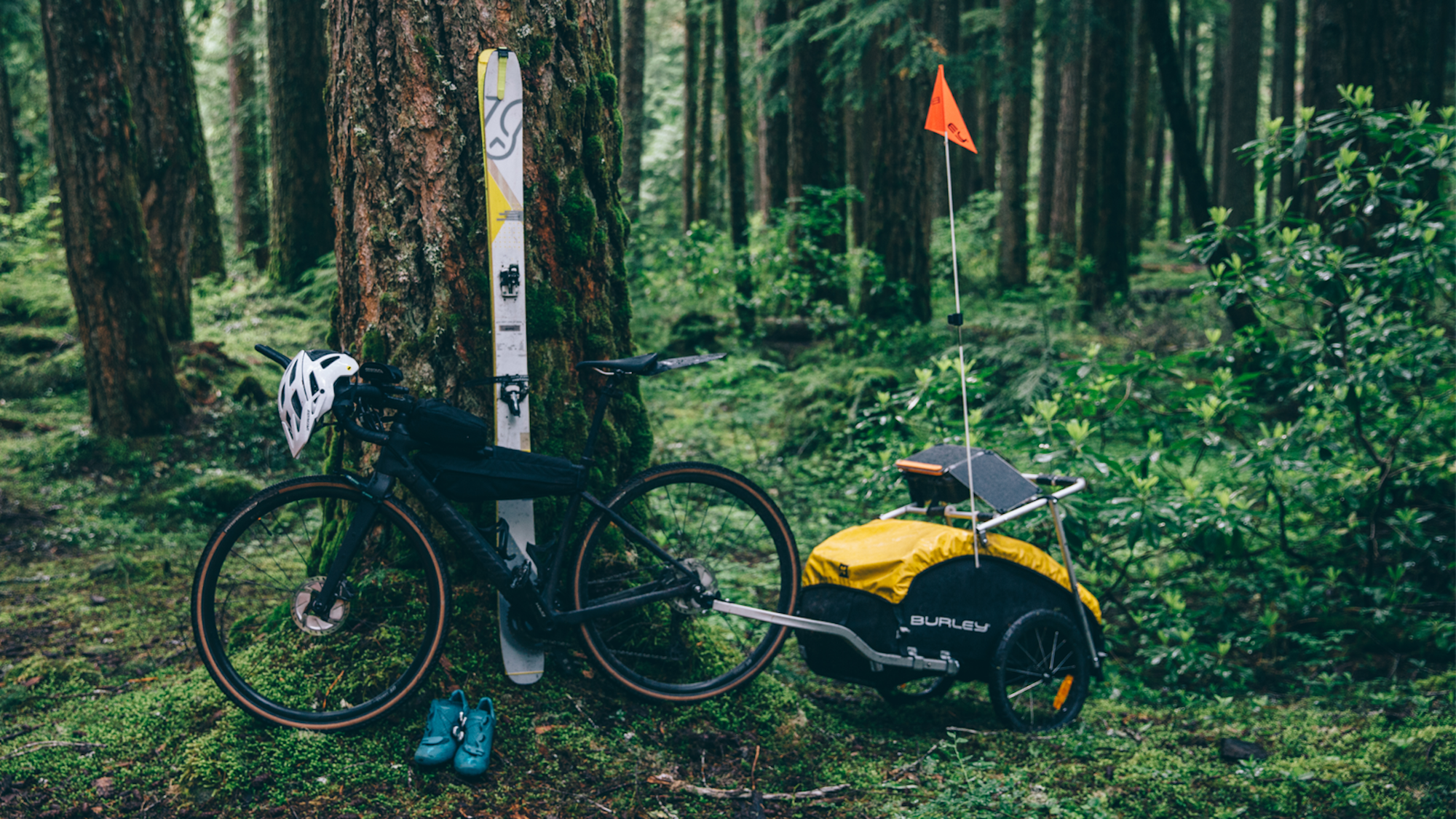The skis, bikes, bags, trailers, and more relied on during a 16-day, self-supported sufferfest in the Pacific Northwest
There’s a lot you can’t control on a big adventure—weather, snow conditions, bears and your gastrointestinal system, to name a few. But, at some point you stop stressing, instead focusing on the things you can plan out. To remind myself of this perspective, I wrote: “You play the hand you’re dealt,” on the inside of my helmet before we started a recent bike-to-ski trip to bag volcanic peaks in the Pacific Northwest.
Months before that moment, our crew put on emphasis on three things: fitness, food and gear. Since we couldn’t ski with COVID-19 restrictions at our respective local resorts, we put in hundreds of miles on bikes near home. We also planned, purchased and packed 165 pounds of dehydrated food and snacks, enough for a self-supported trip without stops at grocery stores or local diners. Then came the tricky part—finding gear that would help us maximize our good times, keep us safe and, of course, keep us looking good while doing it.
The bike-to-ski route we followed spanned seven peaks and 650 miles, from Mount Lassen to Mount Hood. We climbed 100,000 feet in total, all human-powered and surely let out a few swear words here and there. Counting calories quickly became superfluous; counting how many times I wanted to puke was a better indicator of the brutal nature of the adventure. Pulling 140-pound trailers behind our bikes, we rode through rain, heat, hail and snow, stopping only to sleep and ski big mountains. Like our bodies, the gear we used was put through the ringer—and here’s a rundown of the hard-tested equipment that made this entire trip possible.
Diverge Expert from Specialized. I could write an entire novel on the glory that is a Diverge gravel bike, but I’ll spare you the poetic onslaught. The cliffnotes to my novel are as follows–the bike did everything we could ask for, and a bit more. It rides smooth on rough roads and rumble strips, it’s fast on pavement and descents, and it’s durable when caked in mud or freezing slush. In fact, we didn’t have a single mechanical issue all trip. If I never ride a road bike again I’ll die a happy man, thanks to this evil beast.
Vital Skis from WNDR Alpine. Wider than a typical spring touring ski, the Vital is extremely versatile for its 100-millimeter waist width. Snappy, light and fun, we tested prototype pairs of WNDR Alpine’s second ski—which launched to the public this July—and were impressed. The Vital is idea for variety: We had a mixed bag of conditions, from a foot of powder on Shasta to slush on McLoughlin and corn on Hood. Fortunately, the Vital is one of the best pound-for-pound skis out there, rigid enough on the crud and floaty enough in the deeper snowpacks.
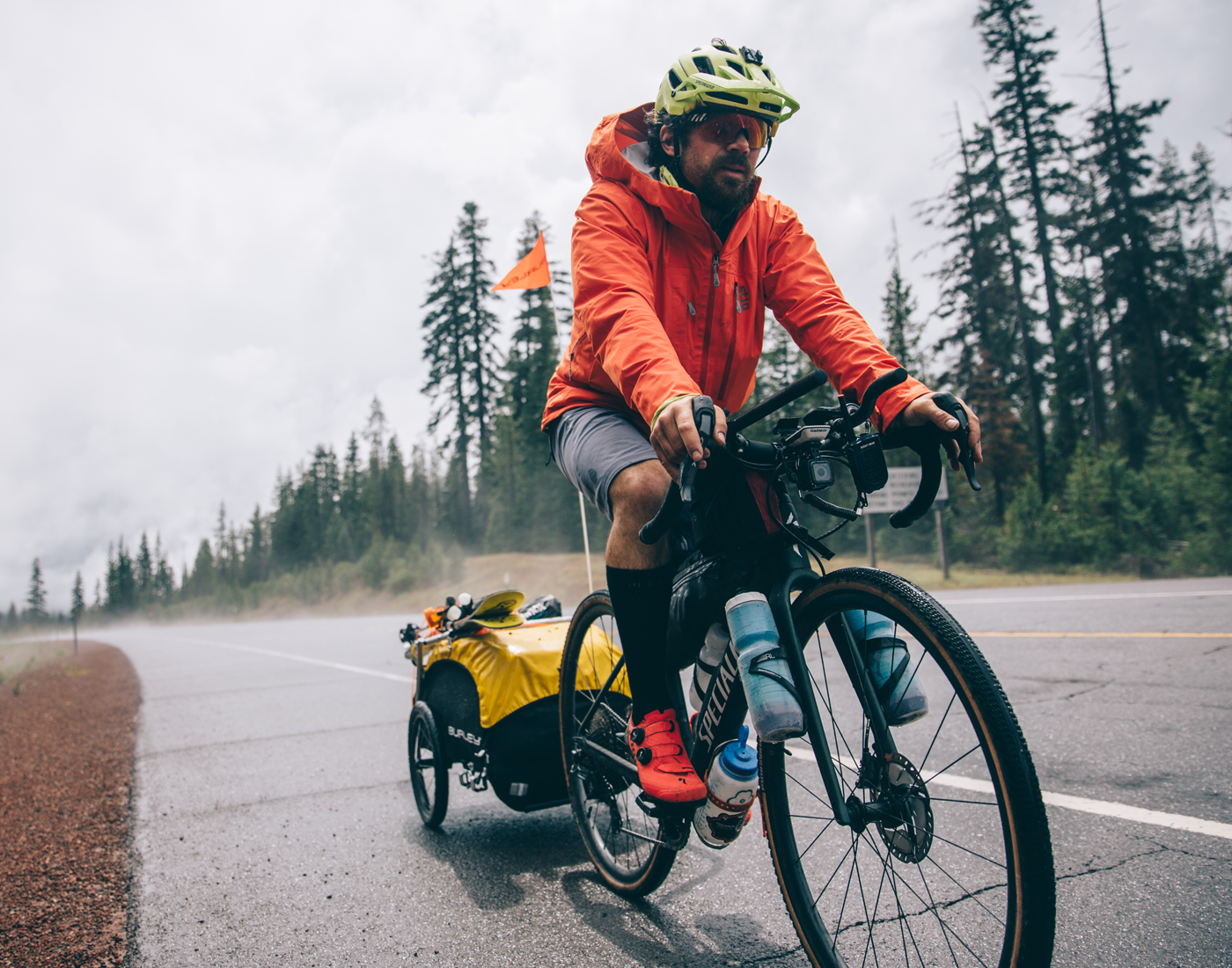
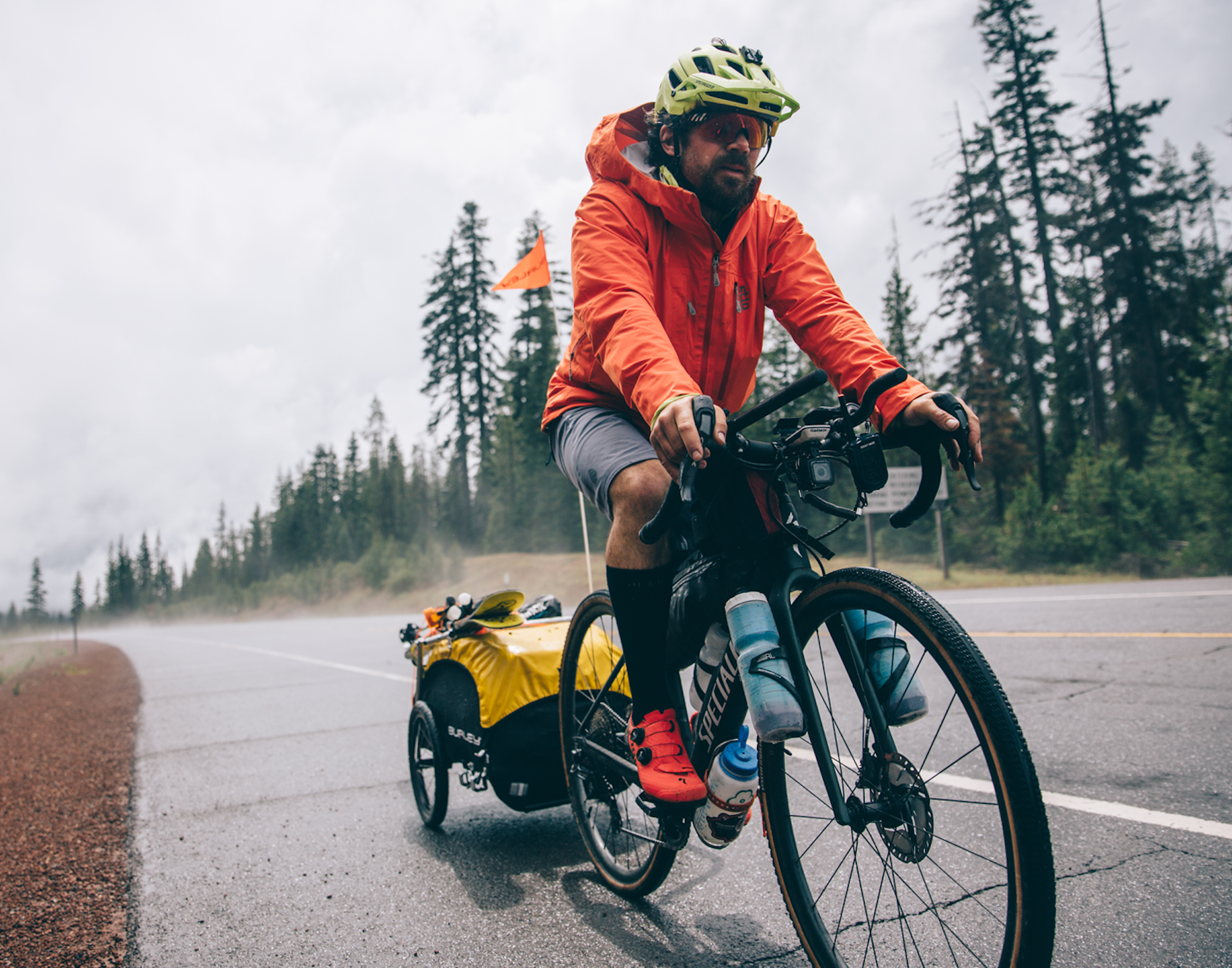
Fully kitted-out on the way to the mountains.
Alpiner Hooded Jacket from Stio. I wore three things nearly the entire trip: wool socks, the same pair of bike shorts and the Alpiner insulated jacket. After the trip, I burned the first two– and if I didn’t have this innate yearning to want to keep using the Alpiner, I might frame it instead. The lightweight puffy kept us warm while biking and skiing, dried amazingly fast and resisted my stank, too. It’s a crucial mid-layer for any type of ski tour.
Nomad Trailers from Burley. Instead of mounting full-frame and handlebar bags to our bikes, we opted to pull trailers. This decision was fairly easy for us: After laying out three weeks of food, camping and ski gear, and clothes, we knew it’d be unwieldy if it was all loaded onto the bike frame. The Nomad proved to be worth its weight in gold, keeping our gear dry and organized, and relative to the huge load, wasn’t the worst to tow during long stints on our bikes. With the added top racks we were also able to dry clothes and charge batteries while rolling, which was a huge bonus.
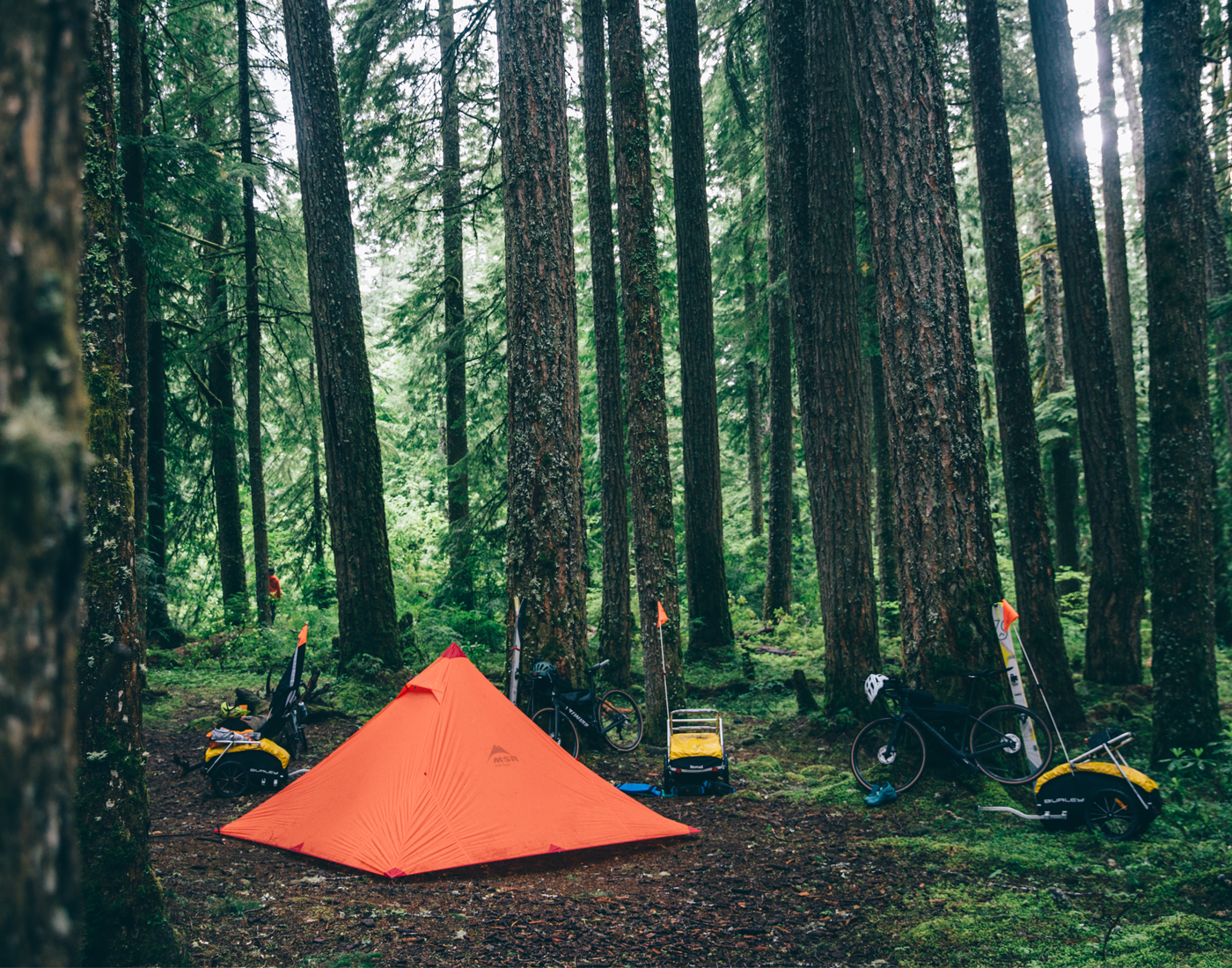
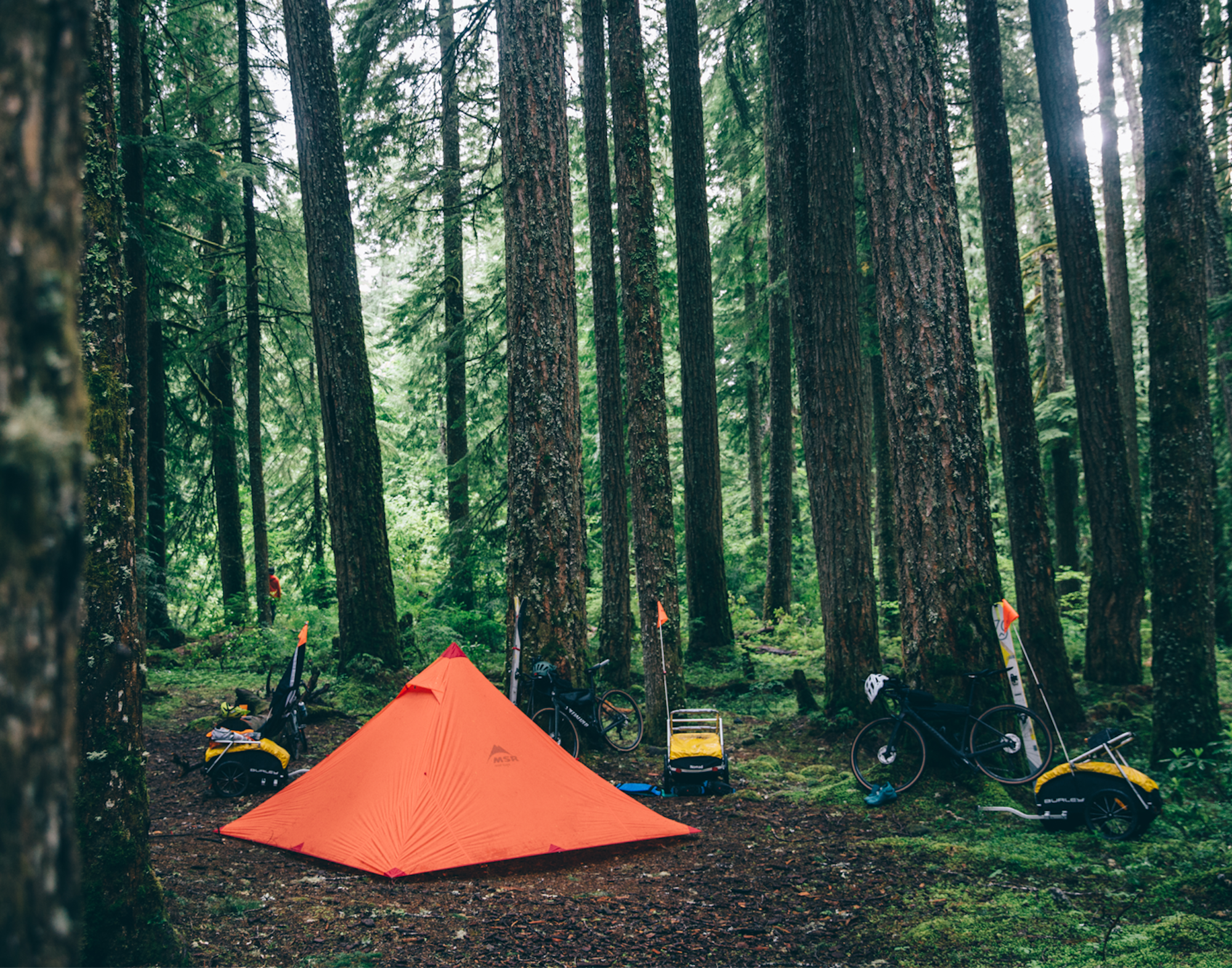
Camp life in the Pacific Northwest.
Barryvox S Transceiver from Mammut. Thankfully we didn’t have to use any of our avalanche safety gear, so I’m instead writing to tell you that friends don’t let friends ski without beacons. But, if we had to, the Barryvox S is equipped with the most sophisticated technology around and a large screen that provides clear, animated instructions in the case of an emergency.
Rush Sunglasses from Julbo. To cut weight, we opted to bike and ski with the same helmet and sunglasses combo. The Rush shades handled the double duty with ease. They rarely fogged up, even on big climbs. They were durable, even when I crashed hard. The photochromic lenses transitioned from light to dark so fast we didn’t even notice the change, making them great for all kinds of light. And the full-wrap design meant they were great for fast skiing, too.
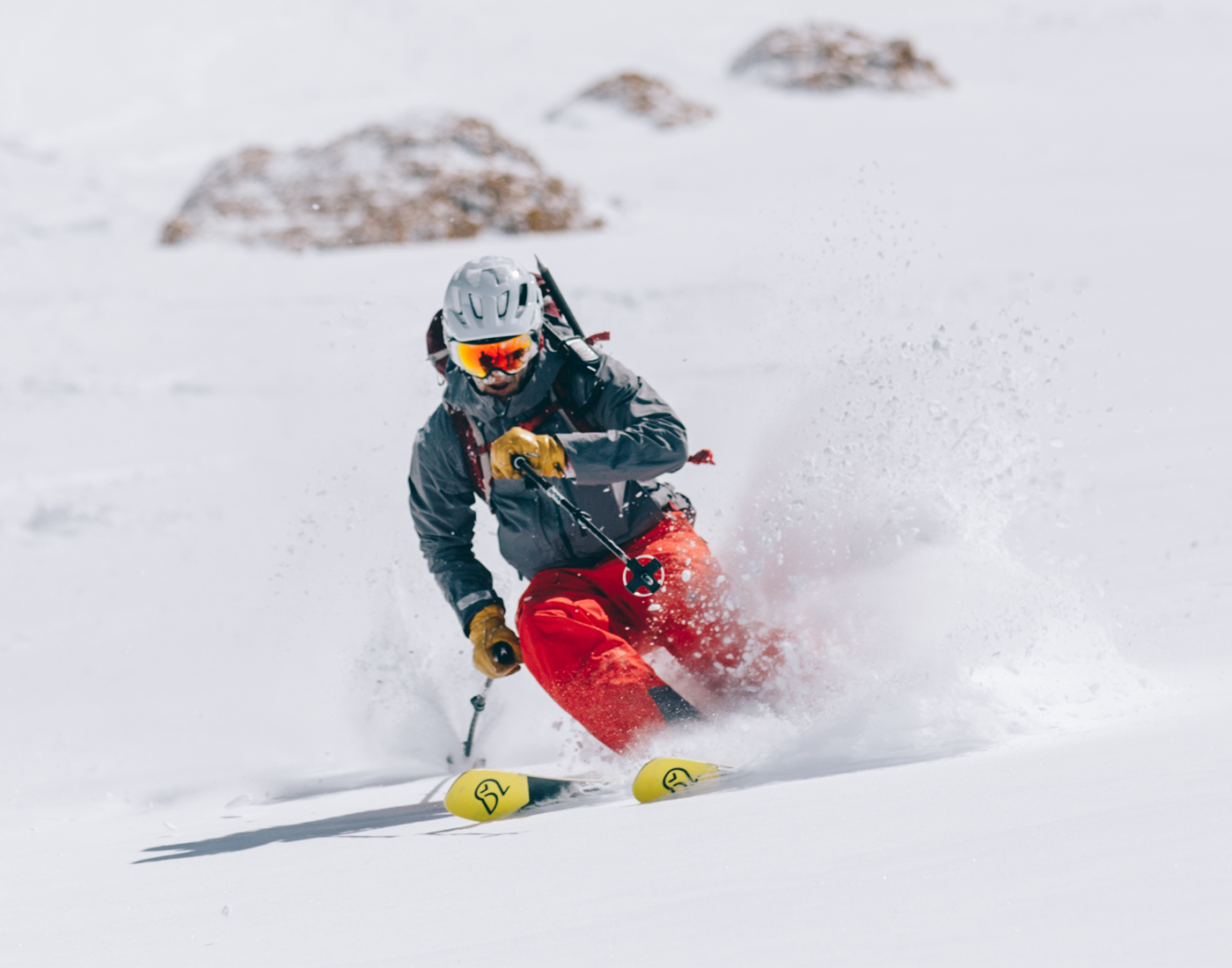
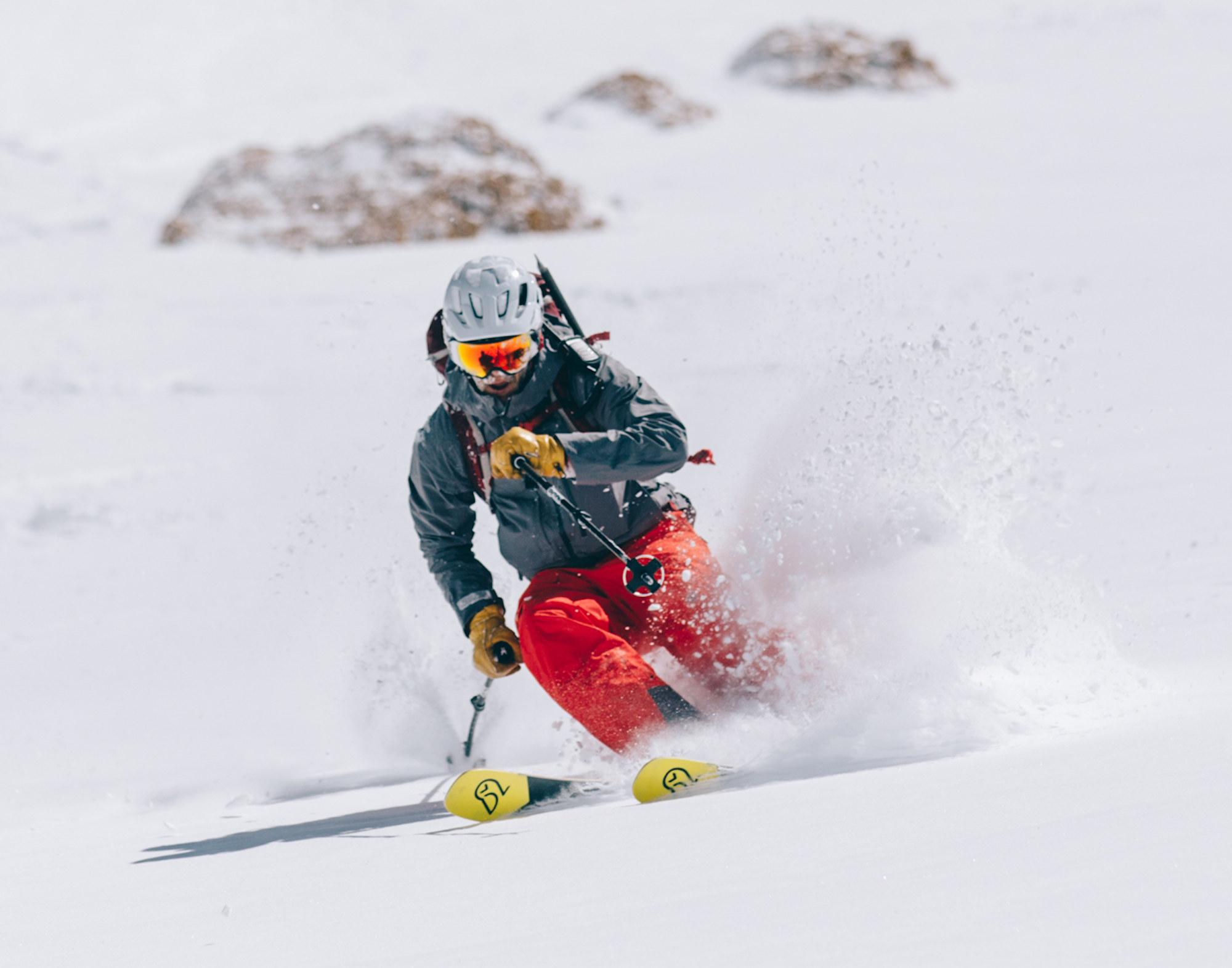
Putting WNDR Alpine’s new Vital skis to the test.
Windburner Group Stove from MSR. Despite bringing two stoves on our trip, we ended up cooking on the Windburner every morning and night. It’s fast to set up, fast to boil water, easy to pack and stow. Unless you’re going ultralight or traveling to a place without butane canisters, it’s hard to imagine a better stovetop when cooking for multiple people.
Bike Bags from Spindle. Instead of buying generic bags from major brands, we opted to work with a custom sewing shop in Atlanta. The top tube and frame bags we got from Spindle fit our bikes seamlessly, allowing access to snacks, tools and spare layers on the fly. They also enabled us to carry two water bottles in the main triangle. And, the bags proved durable and waterproof, even in big storms. This extra bit of effort to get customized bags proved worth the preliminary legwork.
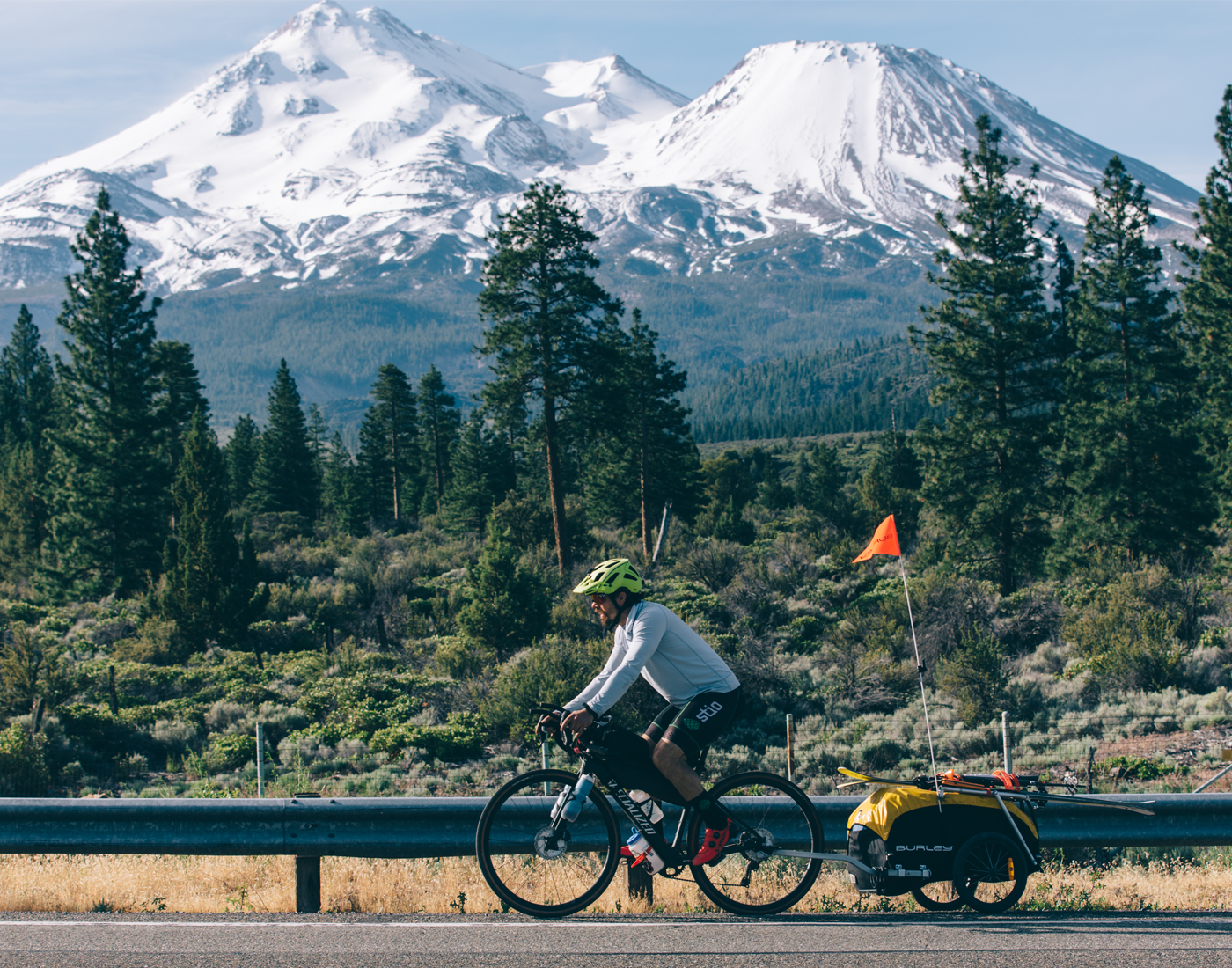
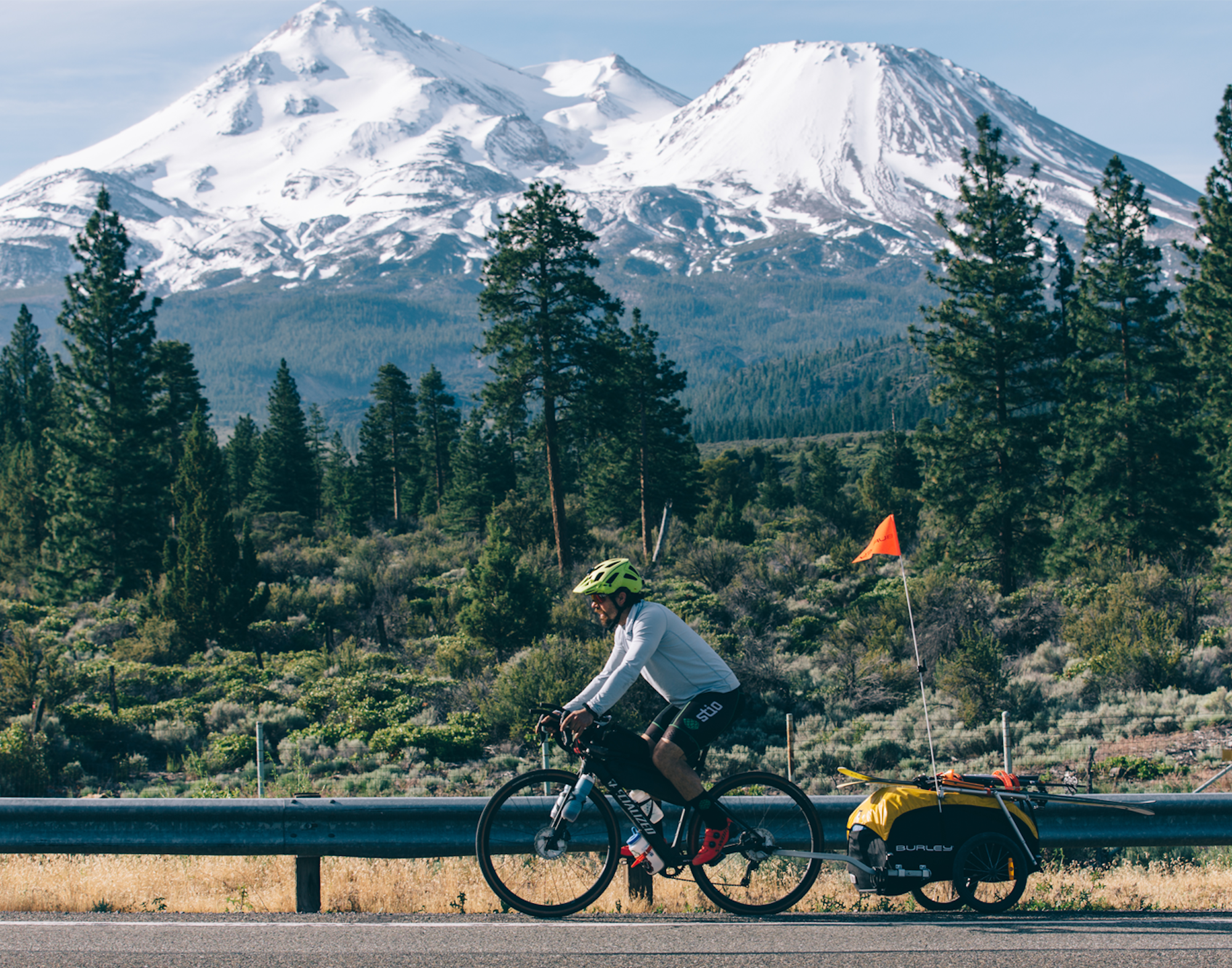
Mount Hood looms in the background during a long day of riding.
Edge 830 Bike Computer from Garmin. We plotted our entire bike route before the trip and uploaded it to the Garmin, using it as our primary navigation tool. With turn-by-turn navigation and a buffet of data to digest, I rarely had to look at my phone or worry about not finding our way when there was shitty service. And, after 16 days of heavy use, I only had to charge it once. Yes, you read that correctly.
Stroopwafels from GU Energy Labs. Tastes like candy, but its (apparently) good for you, too. Thankfully no one was counting how many ‘stroops I ate on this trip, but it’s likely more than a dietitian would recommend. Regardless, with carbs, sodium and amino acids packed into a sweet and delicious waffle, these frequent snacks helped reduce fatigue and fuel us forward.

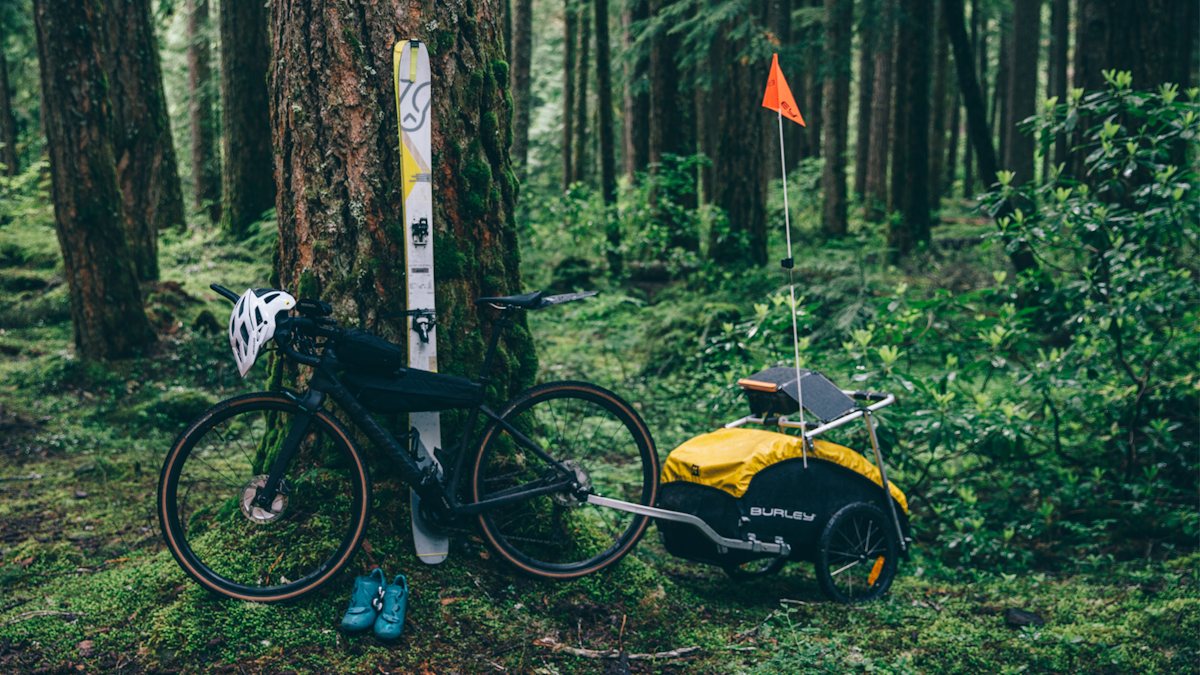


![[GIVEAWAY] Win a Head-to-Toe Ski Setup from IFSA](https://www.datocms-assets.com/163516/1765920344-ifsa.jpg?w=200&h=200&fit=crop)

![[GIVEAWAY] Win a Legendary Ski Trip with Icelantic's Road to the Rocks](https://www.datocms-assets.com/163516/1765233064-r2r26_freeskier_leaderboard1.jpg?auto=format&w=400&h=300&fit=crop&crop=faces,entropy)
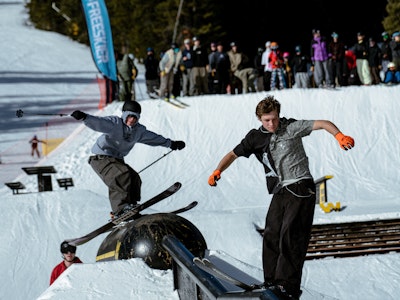




![[GIVEAWAY] Win a Head-to-Toe Ski Setup from IFSA](https://www.datocms-assets.com/163516/1765920344-ifsa.jpg?auto=format&w=400&h=300&fit=crop&crop=faces,entropy)

